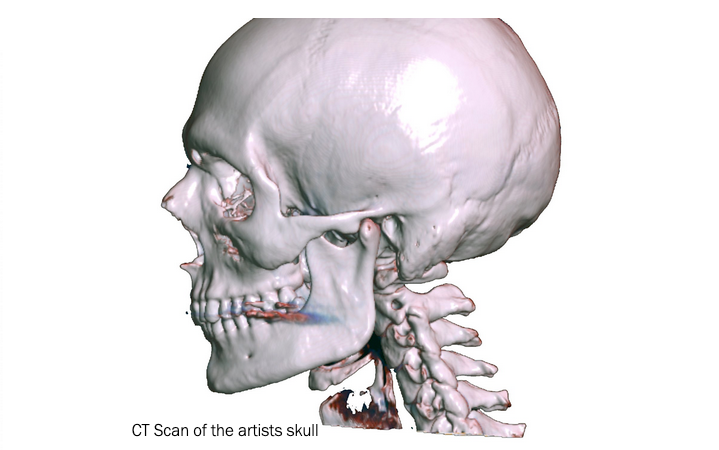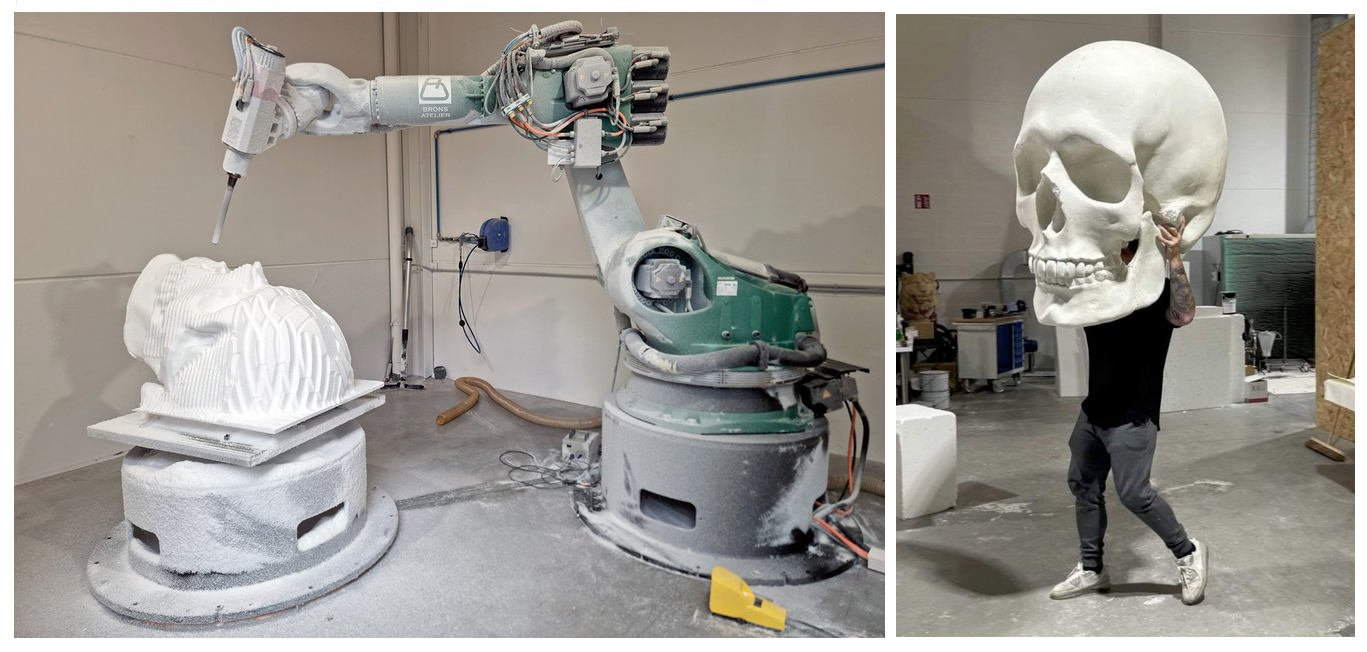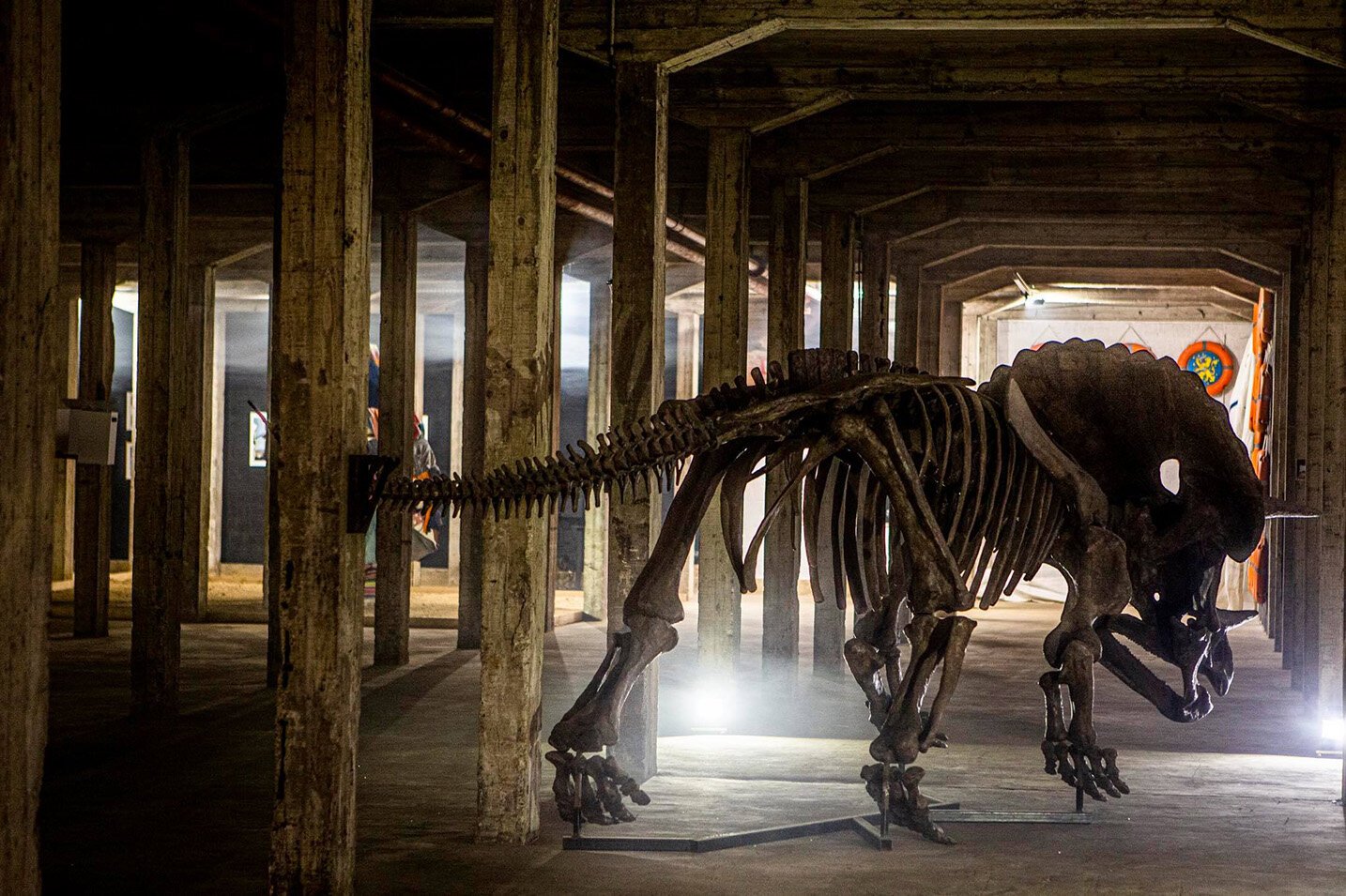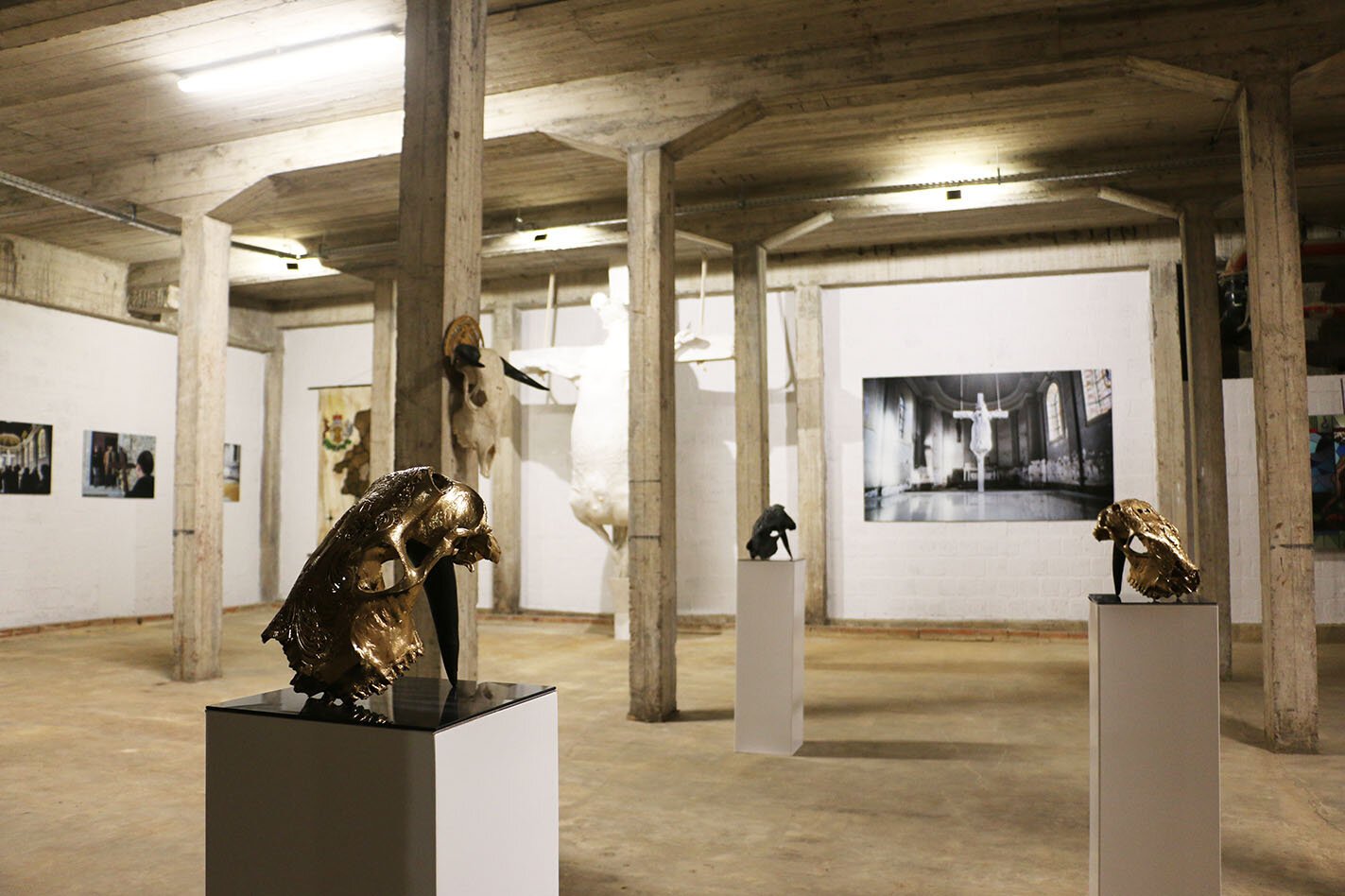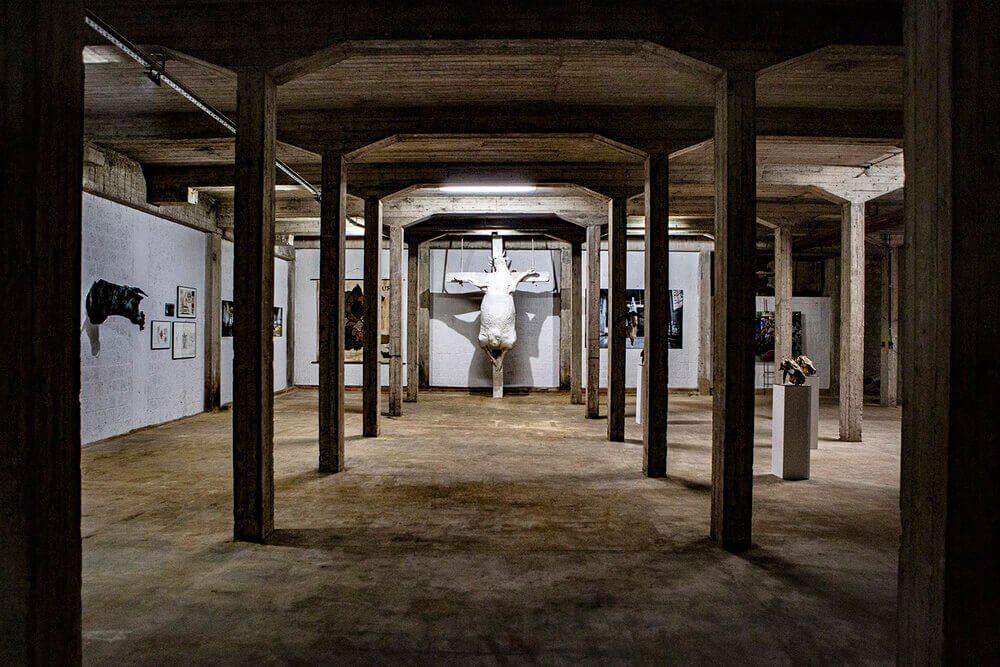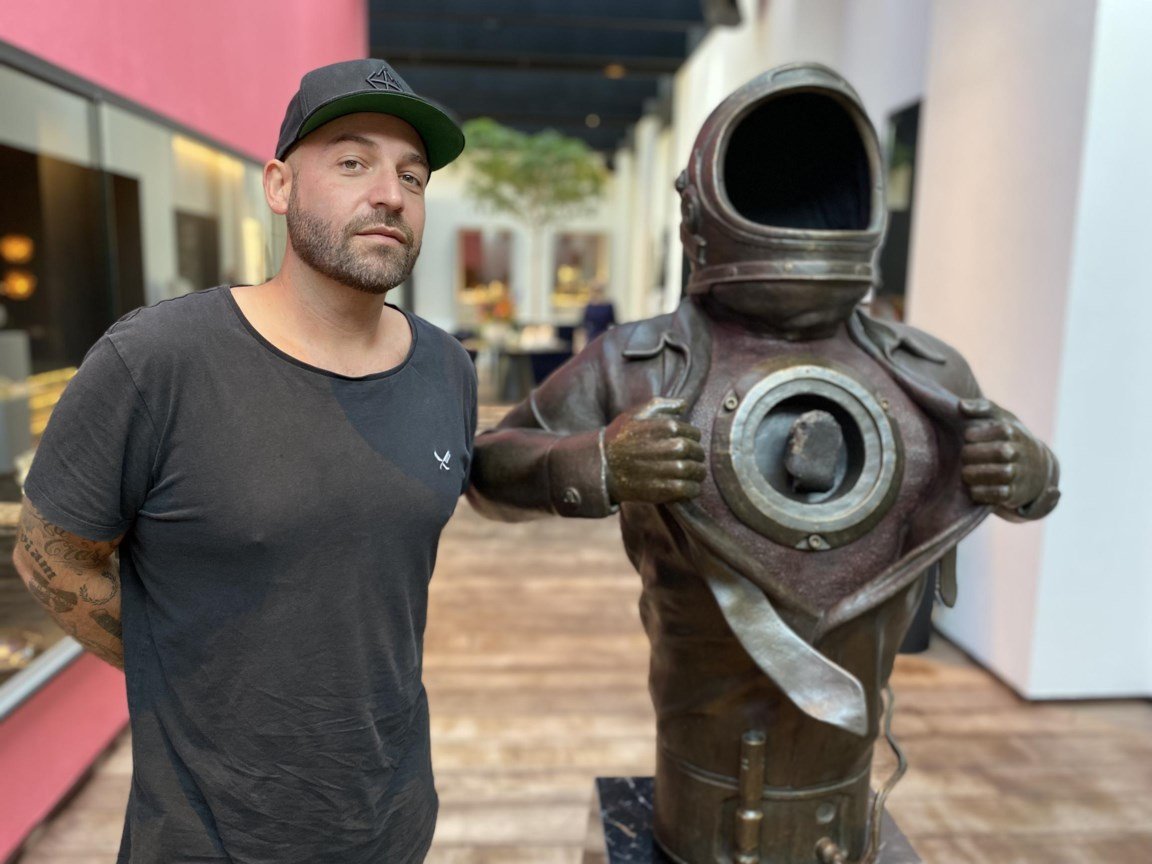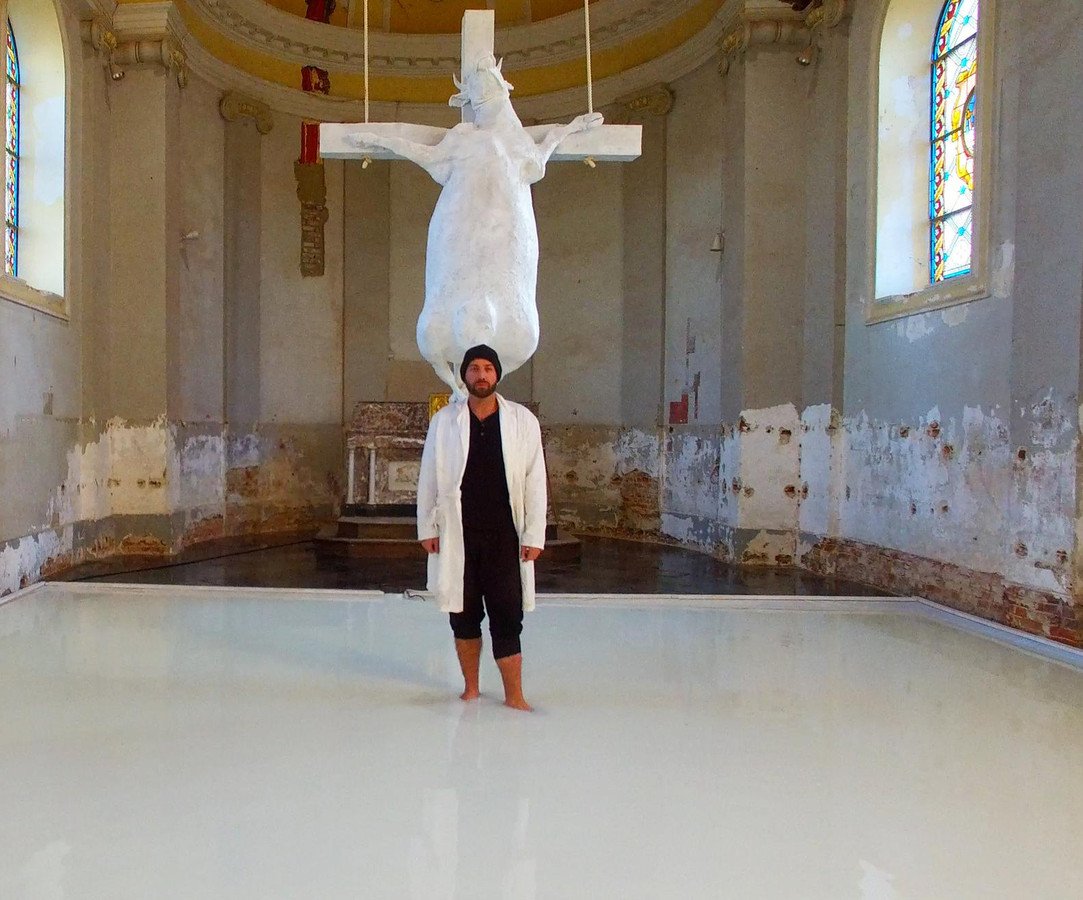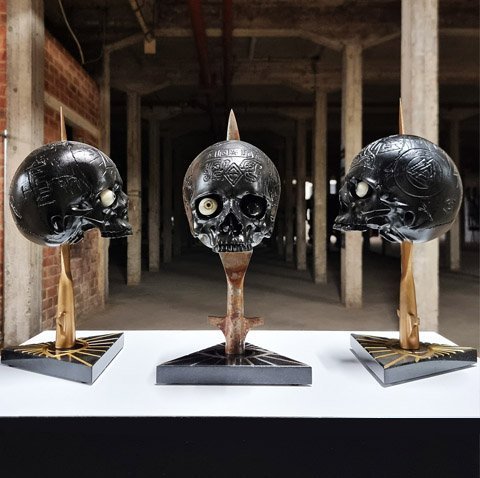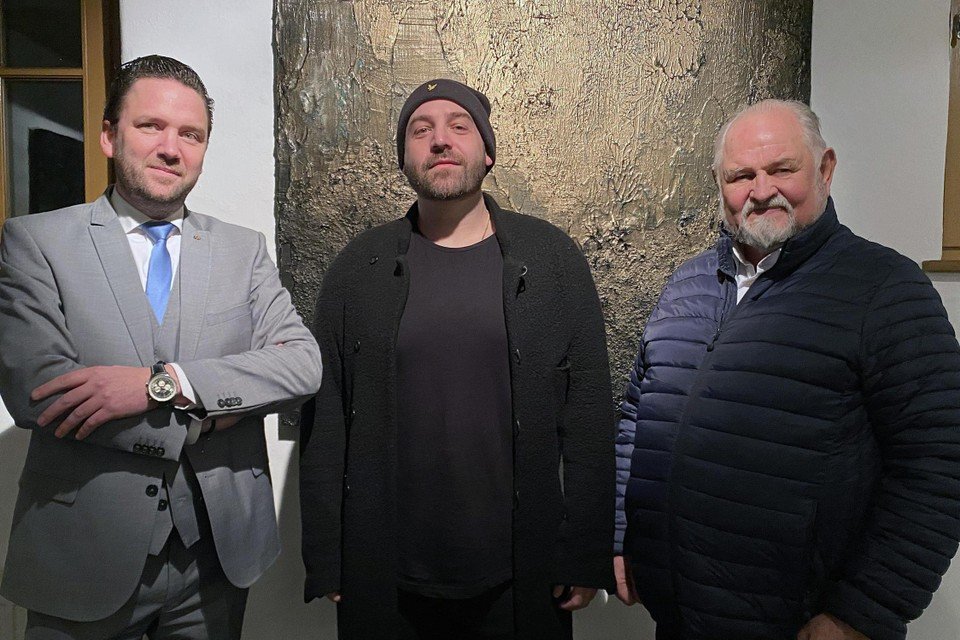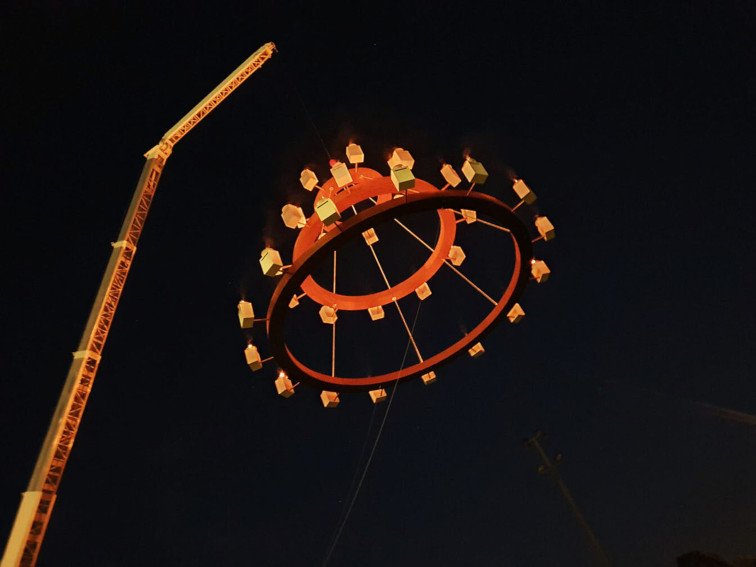Tom Herck - Once we ruled the world (in production)
ONCE WE RULED THE WORLD - THE FISHERMAN (2024)
Dinosaurs, captivating across ages and cultures, hold a prominent place in Earth's history, contrasting with the relatively young Homo sapiens, who emerged 300,000 years ago. Herck reflects on humanity's evolution amidst the digital revolution. The extinction of non-avian dinosaurs 66 million years ago paved the way for mammals and eventually humans. Despite lacking physical prowess compared to dinosaurs, humans dominate as apex predators due to advanced cognitive abilities, tools, and social structures.
The project's title, "Once We Ruled The World," inaugurates a captivating series of monumental installations intertwining human and dinosaur skeletons, serving as a poignant exploration of human ego and vanity. The artist's introspection is evident in the exact replication of his own skull, prompting deeper reflection on themes of extinction and evolution.
In a speculative portrayal of cohabitation in the 21st century, the potential reintroduction of dinosaurs alongside Homo sapiens suggests a renewed risk of extinction. The prospect of domestication for sustenance, labor, and companionship invites contemplation on the cyclical patterns of dominance and decline. Notably, within the specific installation titled "The Fisherman," a symbolic narrative unfolds as a representation of human ego engages in unconventional fishing atop a plesiosaurus. Here, the fusion of ancient and modern elements—such as the use of a USB wire for fishing—serves as a poignant commentary on the encroaching digital revolution and the potential emergence of new human species, ultimately challenging the reign of Homo sapiens.
________
Tom’s story has been documented for about a year and a half. We follow his journey to Venice, where his fisherman will be placed at the Grand Canale. We also explore who is Tom and what made the controversial artist he is today.



